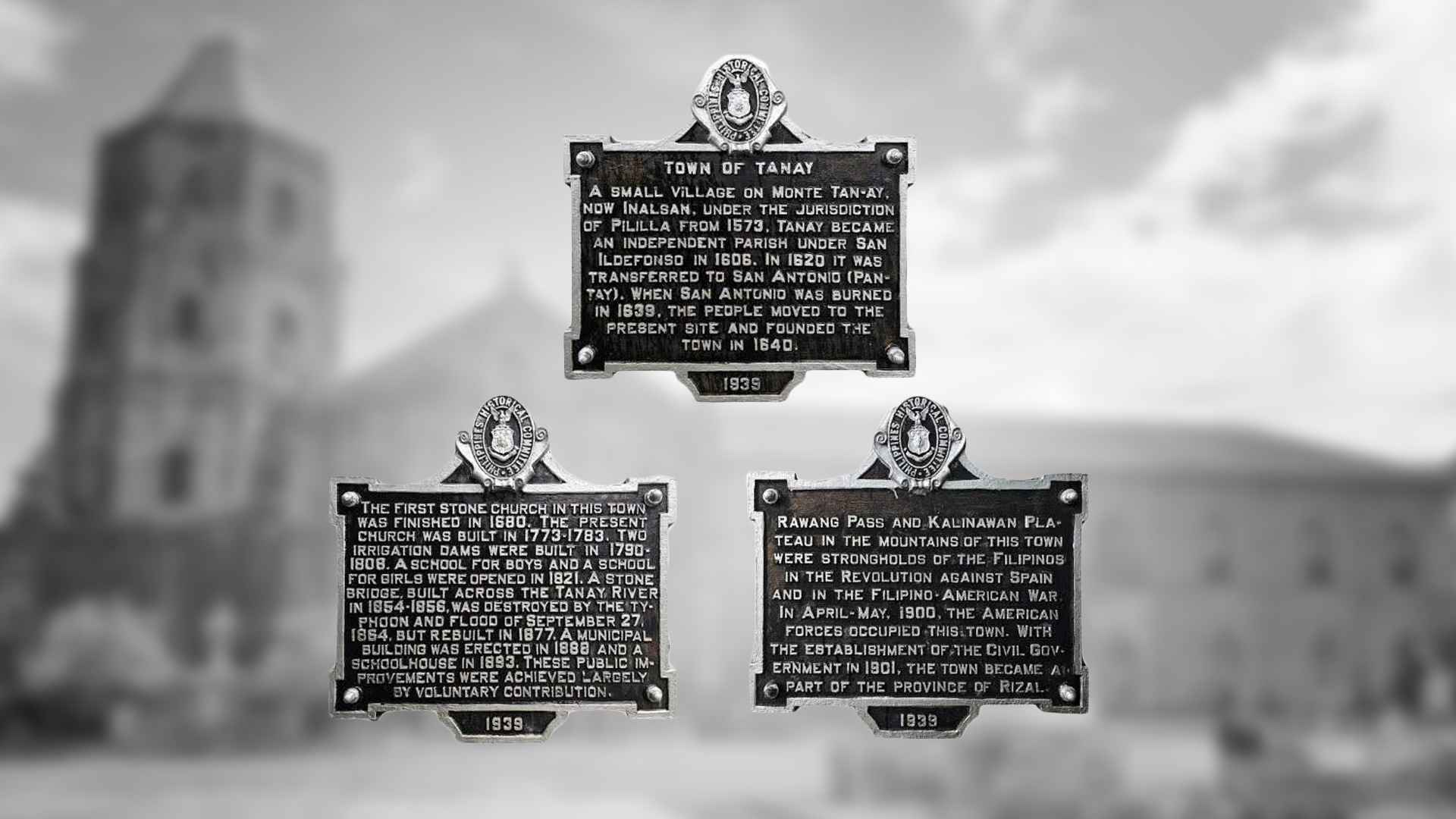‘Stone, Story, and Spirit’: The Faith Markers of Tanay
By Social Communications
Published on May 30, 2025
“These are not just markers on stone. They are the living memory of a people who walked with God through time, struggle, and grace.”
At the threshold of San Ildefonso de Toledo Parish in Tanay, Rizal, embedded in its stone gate, stand historical markers that bear silent witness to the enduring journey of faith of the Tanay community. These are not merely commemorative signs—they are invitations to remember, reflect, and respond to the sacred story of a people shaped by the Gospel and the movement of history.
The story of Tanay begins in 1573 as a small village nestled on the slopes of Monte Tan-ay, once under the care of Pililla. With the arrival of Spanish missionaries, the community began to grow in both faith and number. In 1606, it became an independent parish under the patronage of Saint Ildefonsus, and later, in 1620, it was rededicated under Saint Anthony. But in 1639, tragedy struck—the parish dedicated to Saint Anthony was burned. Still, the fire did not consume the people’s faith. Instead, it refined it. In 1640, the people resettled in their present location and established what would become the town of Tanay.
What may appear to be historical facts are, in truth, spiritual markers. The building and rebuilding of the church were acts of trust in God’s providence. The stones of the parish are not just physical foundations; they are signs of a people grounded in faith, united in hope, and moved by love for God and one another. This is not merely a history of a town, but the story of a living Church—resilient, prayerful, and deeply rooted in its mission.
In the years that followed, the town developed through the spirit of bayanihan—community cooperation and volunteerism. Without great wealth or resources, the people came together to build public spaces, churches, and institutions. This willingness to give and serve reflects the heart of the Gospel. Even during the Philippine Revolution and the Filipino-American War, when fear and uncertainty filled the air, the mountains around Tanay became places of refuge for Filipino fighters. In the shadows of those hills, courage and conviction quietly thrived.
Such stories remind us that faith is never separate from daily life. It is lived in our response to trials, in our efforts to build and protect our communities, and in the hope we hold even in the face of loss. The faith of Tanay is not an abstract ideal—it is a real and lived expression of the love of God passed on from one generation to the next.
When the National Historical Commission of the Philippines installs a marker on a town like Tanay, it does more than note a founding year. It recognizes that before there was a nation, there were communities—formed in faith, shaped by experience, and dedicated to building lives rooted in truth and goodness. These local histories are sacred. They are windows into how the Filipino soul has long sought God, even before the idea of a Philippine nation was born.
From towns like Tanay emerged the first forms of local leadership, commerce, worship, resistance, and cultural identity. These were the early building blocks of the Filipino nation, but also of a deeply Christian people. These are the places where seeds of patriotism and Christian witness were sown—seeds that bore fruit in our national identity and in our continued desire for justice, peace, and unity.
As we stand before these markers today, we are called not only to remember the past but to take up its mission. What kind of markers are we leaving for future generations? Are we building communities centered on faith, service, and solidarity? Do we recognize that our own stories—though seemingly ordinary—form part of the great narrative of God’s love in history?
Let us be inspired by the people of Tanay—not simply for what they built, but for how they believed. May we, too, walk with conviction, live with compassion, and entrust our journey to the God who, from generation to generation, remains ever faithful.



